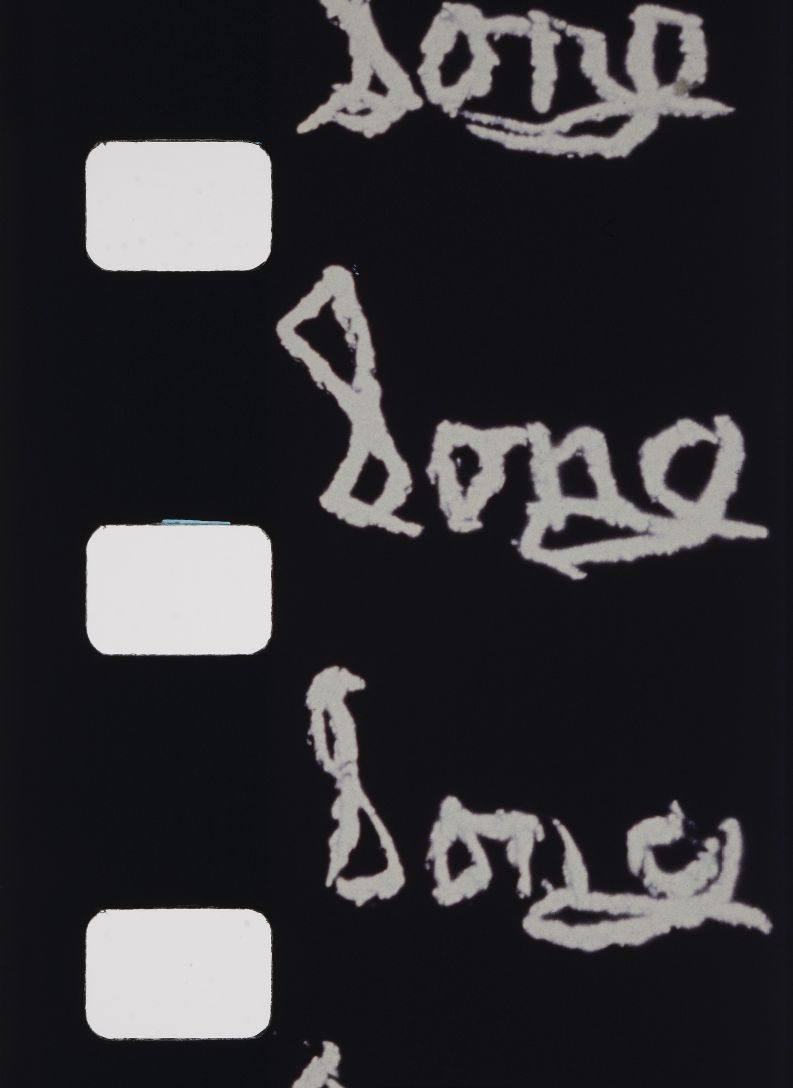75004 Paris
Session as part of the Festival des Cinémas Différents et Expérimentaux de Paris.
Programmed and presented by the Centre Pompidou film collection department
Paris, 1976: Une histoire du cinéma takes place at the Centre national d’art contemporain (CNAC), rue Berryer. Conceived by the Centre Pompidou as a prelude to the museum that would open the following year, this “exhibition” presented some three hundred films produced outside the industry and auteur cinema, most of which made their way into the museum’s collections. The chronological organization of the sessions (from the origins of cinema - 1895, to contemporary production - 1975) was suspended for one special screening: on Tuesday, March 2, 1976, the closing day of the CNAC, Stan Brakhage’s Songs were presented. This singular body of work, made in 8 mm between 1964 and 1969, was, probably for technical and logistical reasons, staggered in relation to the program (the screening took place between two others dedicated to films made in 1971), and was not advertised on the printed material of the time. As institutional archives are incomplete, only the testimony and notes of an audience member provide an account of this exceptional event. Thanks to Raphaël Bassan, critic and co-founder of the Collectif Jeune Cinéma, and his personal archives (a series of notebooks in which he has recorded all the films he has seen since 1963), we can attempt to reconstruct the circumstances of this screening. At the March 1976 screening at the CNAC, Songs 1 to 23, out of the 30 films that make up the complete set, were shown in a late-night session that ended at 2am. Rarely shown due to the “substandard” projection medium, Brakhage’s Songs have been part of the Centre Pompidou’s collections since its opening. They were, however, partially screened in Paris, as part of the seminal “Avant-garde, Pop and Beatnik” program organized by American critic P. Adams Sitney at the Cinémathèque Française in Paris at the end of 1967. More or less confidentially, and perhaps in keeping with the nature of the “amateur” medium, the Songs were shown not at the Cinémathèque, but in an apartment (“M. Hébert’s”, according to Dominique Noguez’s recollection1). This group of films re-emerged in Paris in 1976 in Une histoire du cinéma, and then, a few years later, resurfaced at the Centre Pompidou. It was then that Raphaël Bassan wrote about it, in a text published in La Revue du Cinéma (No. 362, June 1981) and reproduced below in its entirety:
“From April 29 to May 3, 1981, the Centre Pompidou’s Cinéma/vidéo unit presented the entirety of Stan Brakhage’s famous but little-seen work, Songs2.
This event was significant for several reasons. Brakhage establishes subtle correspondences between the individual (his environment, his daily life as well as his thoughts) and the universe (cosmogonic view of things). The subjects of his films revolve around births (often those of his successive children), portraits of friends, weddings, sexual experiences - but always put in relation to the cosmos - and visual tributes to naked bodies. But Brakhage is not content with simple formal subversions such as superimposition and rapid editing; he also hand-draws on the film and indulges in all manner of chemical interventions. As a result, his films can be viewed either as a whole, in terms of duration, or as individual photograms, as complex pictorial works in their own right. The superimpositions of birth scenes with images of suns, flower petals and phosphorescent moons sum up part of his philosophy. The Songs were born in the mid-1960s.
Brakhage was in New York in 1964 to present some films. His 16mm equipment was stolen. With the thirty-five dollars he recovered from his insurance, he bought an 8mm camera and began shooting, without really having any clear idea of the work’s purpose.
It wasn’t until a year later, in 1965, after he had made a dozen Songs, in which most of the themes he had previously dealt with in 16 mm were once again intertwined, that the idea of a single, global work began to emerge.
Between 1964 and 1969, Brakhage produced thirty Songs (songs of a certain America in need of lyricism), each lasting between four and one hundred minutes (three hundred and eighty minutes in all), in which his “cosmic” way of looking at things was loosened by the use of this format, which obliged him to carry out the various phases of filmic work (such as superimposition, for example) inside the camera, as the laboratories were not used to this kind of practice.
The years from 1964 to 1969 also coincided with the height of the American counterculture, Flower Power, the emergence of sexual representation in media, and the widespread use of light equipment (the Super 8 was launched in 1965), all of which Songs represented the archetype and reference model.”
For this new screening at the Centre Pompidou (the first since 1981), the 8 mm projection will be provided by L’Abominable, an artist-run laboratory that contributes to ensuring the transmission of photo-chemical film know-how. This will be an opportunity not only to discover objects - Stan Brakhage’s Songs - but also to see in action this veritable intangible heritage that is projection. In this context, the phrase “ecology of a collection” is more than just a metaphor.
✴ Screening of Songs 1-14 (1964-1965), 21-22 (1965), 24-25 (1967), 8 mm, color and black and white, silent. Total running time: approx. 74 minutes
Copies of Songs 1-14 are distributed by LUX (London); copies of Songs 21-22 and 24-25 are from the Centre Pompidou collections.
Acknowledgements
Marilyn Brakhage, Hanan
Coumal (LUX), Nicolas Rey
and Julia Gouin (L’Abominable).
1. The invitation is republished in his book Une renaissance du cinéma. Le cinéma « underground » américain, Paris, Paris Expérimental 2002, p. 172.
2. Its duration is 6h20, according to the serious work of P. Adams Sitney. We actually only saw at the Centre Pompidou 5h of film. The thirty Songs were indeed shown, but some were greatly shortened (15th Song Traits, which is usually 47mins long, was only 30mins, and only half of American 30’s Song, supposed to be 30 mins, was shown).

